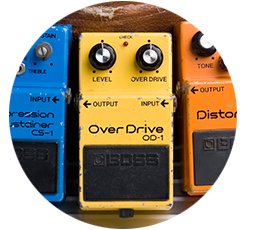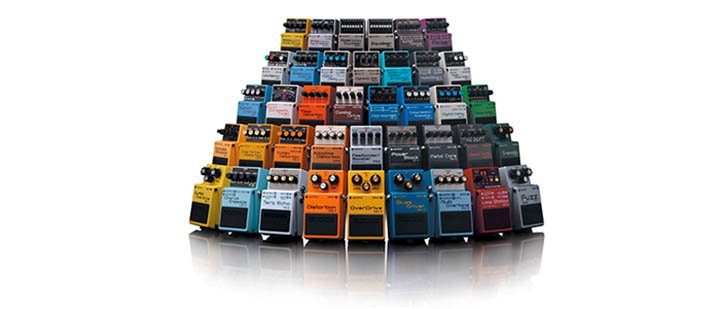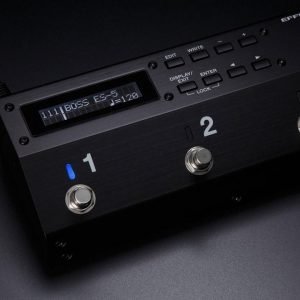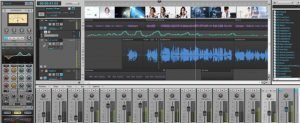The compact pedal market has never been stronger, with hundreds of manufacturers offering improved designs on old models, plus a seemingly endless array of cool new buzzes, whistles, whips, and snorts to add to your rig. While this can be incredibly confusing for the young musical adventurer, the choices are there for the offering, and the joy of discovery is ever present.
Contributed by Braegen Russell
Over the next few articles, I hope to spark your excitement while talking in-depth about the varieties of guitar effects pedals. My aim is to offer some categorical clarity in what can be an overwhelming sea of options.
 Interestingly, abundance of choice wasn’t always the case. There was a time when compacts looked like they were on the verge of dying out. By the mid ‘80s, hair bands, Lycra and spandex dominated the guitar scene, more powerful digital rack mounted effects units were in, and rack mounted preamps were the players’ choice for all things distortion.
Interestingly, abundance of choice wasn’t always the case. There was a time when compacts looked like they were on the verge of dying out. By the mid ‘80s, hair bands, Lycra and spandex dominated the guitar scene, more powerful digital rack mounted effects units were in, and rack mounted preamps were the players’ choice for all things distortion.
At this time, floor pedals were almost exclusively used by amateurs and garage bands. The majority of the ‘pros’ believed analog effects to be a weak, noisy, inferior option, not good enough for the rigours of live performance, and definitely not delivering the ‘cool’ factor that went with crop tops and lipstick.
If it wasn’t for blues legend, Stevie Ray Vaughan, a man who delivered a purity and simplicity with ferocity and enthusiasm, along with the massive global rise of the Seattle grunge scene, the compact would probably be a thing of the past.
These factors, and more, generated a renewed interest in the compact market, giving rise to a sudden, almost overnight appearance of dozens of boutique pedal manufacturers encouraging young players to return to the roots of ‘guitar tone’. There’s been no turning back.
 These days when it comes to effects, it’s whatever floats your boat. If you’re into rack mounted effects units, there’s choice a plenty. If it’s multi-effects units delivering huge tonal palettes at affordable prices, there’s literally dozens of options. There’s also amp-mirroring amps, hand wired vintage replica stomp boxes, even iOS driven clones that you simply decide what style of pedal it should be, download the contents and away you go. What it all comes down to is your choice of tone. There is no right or wrong answer, whatever feels best to you is what’s right for you.
These days when it comes to effects, it’s whatever floats your boat. If you’re into rack mounted effects units, there’s choice a plenty. If it’s multi-effects units delivering huge tonal palettes at affordable prices, there’s literally dozens of options. There’s also amp-mirroring amps, hand wired vintage replica stomp boxes, even iOS driven clones that you simply decide what style of pedal it should be, download the contents and away you go. What it all comes down to is your choice of tone. There is no right or wrong answer, whatever feels best to you is what’s right for you.
With this series of articles, I break down the main categories of effects, modulators, filters, drives, boosts, echoes and delays, give you real examples of each and provide further research options, without overcomplicating the pool of choices. By focusing on the core varieties, I hope to offer a better insight into the combinations of compacts and the infinite wonders that are available to us guitarists today.
Image: Kenny Kiernan / 123RF
Related Articles
How 3 BOSS Pedals Changed The World – Part 1
How 3 BOSS Pedals Changed The World – Part 2
BOSS Pedals of the Pros








